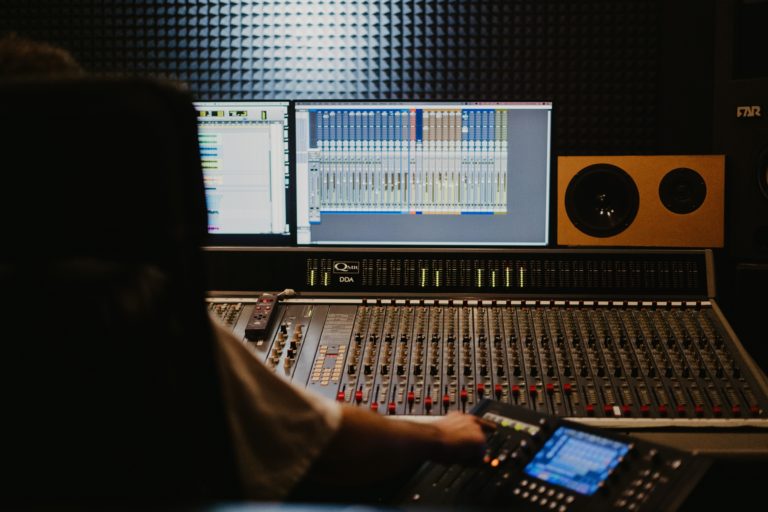You’ve done it! After countless hours in the studio, pouring your heart and soul into your music, you’ve finally finished recording your tracks. It’s an exhilarating feeling. But now comes a critical step – sending your music tracks to a mixing engineer.
This process is more than just transferring files. It’s about setting the stage for the next phase of your music journey. A well-prepared submission can make all the difference in how your tracks are mixed and, ultimately, how they sound to your listeners.
But where do you begin? What steps must you follow to ensure your tracks are ready for professional mixing? And how can you avoid common mistakes that could hinder the mixing process?
Don’t worry. We’ve got you covered. This comprehensive guide will walk you through each process step, from cleaning up unwanted noises, consolidating and labeling your tracks to correctly exporting your tracks. Whether you’re new to the process or need a refresher, this guide is here to help you make your music sound as vivid and dynamic as your faith.
So let’s dive in and get your music ready for the expert touch of a mixing engineer!
Ensuring High-Quality Audio Recordings
Quality is key. Your initial recordings must be crisp, clear, and free of any unwanted noise. Remember, a mixing engineer can enhance your music but can’t fix a bad recording.
Tip: Always use a high-quality microphone and record in a quiet, acoustically-treated space.
Check out 7 Tips For Recording Vocals Like A Pro In Your Home Studio for tips on getting high-quality audio recordings.
Removing Unwanted Noises from Your Tracks
Identifying and removing unwanted noises from your tracks before sending them for mixing is crucial. Unwanted noise can come from various sources, which include:
- Background Noise: This can be anything from the hum of an air conditioning unit to the rustling of papers in the recording room. Always aim for a quiet recording environment.
- Equipment Noise: Faulty cables, buzzing amplifiers, or even the hiss from a vintage microphone can introduce unwanted noise into your tracks. Regularly check your equipment to ensure it’s in good working condition.
- Plosive Sounds: Hard ‘P’ and ‘B’ sounds can cause a burst of wind to hit the microphone, resulting in a popping sound. Using a pop filter can help mitigate this.
Remember, addressing these noises during the recording phase can save you much time and effort during the mixing phase.
Consolidating Your Tracks
Consolidating tracks is a crucial step in preparing your music for mixing. This process involves merging your track’s separate elements — such as the different takes or segments you’ve recorded at various points — into a single, continuous file for each track from the beginning to the end of your song. This ensures that all your segments start at the same point, making it easier for the mixing engineer to work with. Here’s a simple step-by-step guide on how to consolidate your tracks:
- Open Your DAW: Launch the digital audio workstation (DAW) you used for recording your music.
- Select Your Tracks: Highlight all the sections of a track that you want to consolidate. This usually includes the different takes or segments you’ve recorded.
- Consolidate: Once you’ve selected the track sections, find the “Consolidate” or “Merge” function in your DAW. This will combine all the segments into a single, continuous file.
- Repeat for All Tracks: Repeat these steps for each of your tracks.
Properly Labeling Tracks
Correctly labeling your tracks is an art that simplifies the mixing process and helps your mixing engineer immensely. Proper labeling allows for easy identification and organization of numerous tracks, ensuring that the mixing engineer spends less time figuring out which track is which and more time crafting your sound.
Failure to properly label tracks can result in confusion, delays, and misinterpretations that could affect the quality of the mix. This is especially true when dealing with large projects with dozens of tracks. Therefore, the importance of this step cannot be overstated.
An Easy-to-Follow System for Labeling Your Tracks Effectively
Here’s an easy-to-follow system for labeling your tracks effectively:
- Keep it Simple and Descriptive: Your track names should be simple and to the point. Use words that accurately describe the content of the track. For instance, ‘Lead Vocal,’ ‘Backing Vocal,’ ‘Electric Guitar,’ ‘Bass,’ and so on.
- Include Relevant Details: If multiple takes or versions of a particular instrument or vocal exist, include this in the label. For example, ‘Electric Guitar – Chorus,’ ‘Lead Vocal – Take 2’.
- Use a Consistent Format: Consistency is critical. Decide on a format for your track names and stick to it. This could be as simple as ‘Instrument – Details.’
- Avoid Special Characters and Spaces: To ensure maximum compatibility across different systems and software, avoiding using special characters and spaces in your track names is best.
- Number Your Tracks: Lastly, consider numbering your tracks. This can make it easier to keep track of the order and the total number of tracks in your project.
Remember, correctly labeling your tracks aims to simplify and make the mixing engineer’s job more straightforward and more efficient, allowing them to focus on enhancing your sound. The more precise and organized you are with your track labels, the smoother the mixing process will be.
Properly Exporting Tracks
Properly exporting your tracks for mixing is the final and one of the most vital steps in preparing your music for mixing. It converts your song’s tracks into audio files that can be opened in any digital audio workstation (DAW). This is crucial to ensure your mixing engineer can work with your tracks no matter their DAW.
Here’s how to export your tracks properly:
- Zero Out Your Faders: Make sure the level of each track is set to 0db before you start exporting.
- Bypass Track Effects: Bypass all track effects like EQ, compression, and reverb. Your mixing engineer will handle this in the mixing process.
- Export in WAV or AIFF: Choose either WAV or AIFF format when exporting. These formats are lossless, meaning they don’t lose audio quality in the export process.
- When exporting, make sure to export mono file sources (Kick, Vocal, Bass) in mono and stereo file (Piano, Synth, Effects) sources in stereo.
- Ensure each track starts and ends at the same time.
Tip: Most DAWs will automatically allow you to perform steps 1 & 2 on the export menu.
Common Mistakes to Avoid When Exporting Tracks
While exporting tracks seems straightforward, there are common mistakes that you should avoid to ensure your mixing engineer has the best possible starting point:
- Not Exporting Each Track Individually: Always export each track as its separate file. If you bundle multiple tracks together, it limits what the mixing engineer can do.
- Including Effects on the Exported Tracks: Ideally, tracks should be exported ‘dry’ or without any effects. This gives the mixing engineer more control.
- Exporting in MP3 Format: MP3 is a ‘lossy’ format, meaning it loses audio quality in the export process. Always export in a lossless format like WAV or AIFF.
By following these steps and avoiding these common mistakes, you can ensure a smooth mixing process and a final mix that meets your expectations.
Conclusion
Remember, the goal is to give your mixing engineer the best starting point for crafting your final sound. With these tips, you’re on your way to creating a polished, professional-sounding Christian music track.
Ready to take your music to the next level? Submit your tracks to VIVID TEMPO today!


